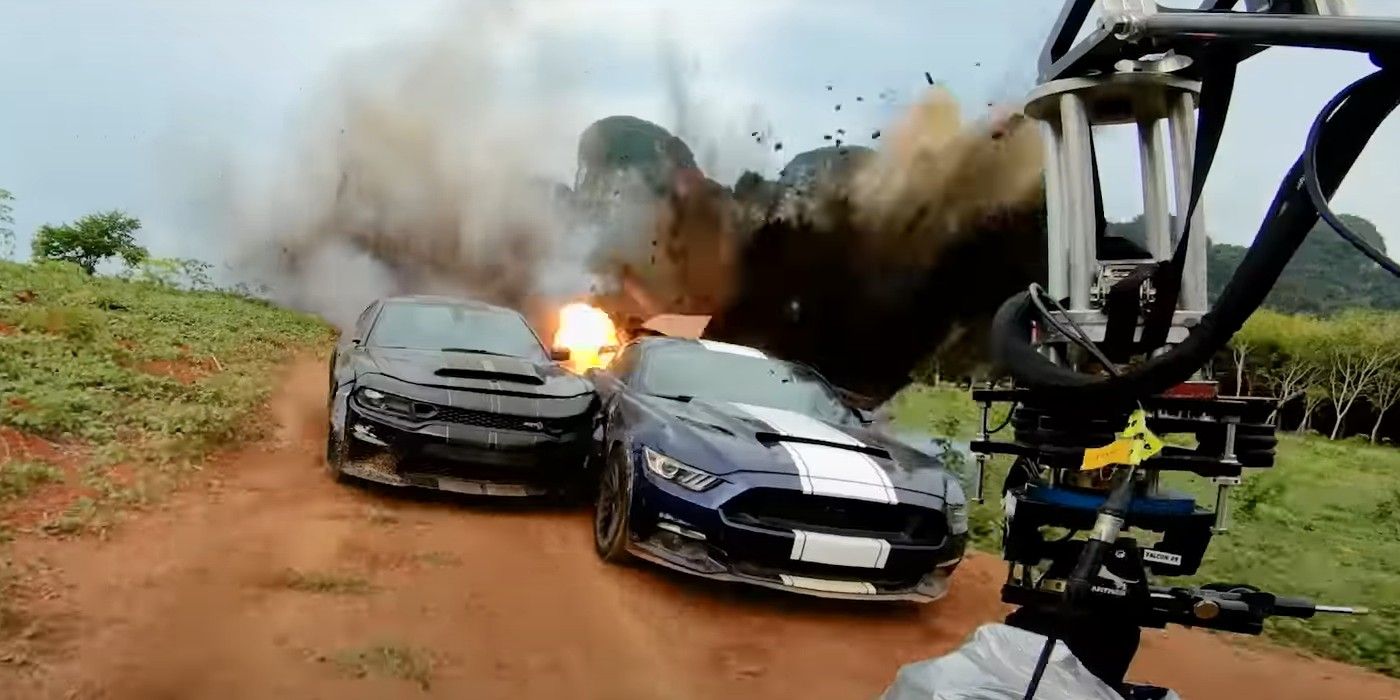Justin Lin, director of the latest Fast & Furious installment F9, explained why the franchise sticks to extravagant practical stunts as opposed to extensive visual effects. Lin, who directed Fast & Furious movies 3–6, ended up leaving the franchise for about six years before returning for F9. Lin is also expected to direct the next and final two films in the main Fast & Furious franchise.
Fast & Furious, the franchise about family, loyalty, morality, and cars (sometimes in the opposite order), has made a name for itself for being an over-the-top exhibition of vehicular action for two decades. As the years have gone on, the franchise has only gotten even more outrageous, boasting some of the world’s most expensive and exclusive cars. With every film, the action that the cast and their auto-counterparts perform ratchets up to a new level as well: the cars have flown, skydived, swam underwater, and now, in F9, they’re dealing with super magnets and going to space.
In an interview with IndieWire, F9 director Justin Lin justified using expensive and logistically complex practical stunts over CGI cars for the franchise. Lin, who even goes so far to direct the actors on soundstages in the U.K. while coordinating the stunt team’s immense and complex action sequences in Thailand, maintains that the extra work and coordination is worth it. Though visual effects are a large part of making the films as lovingly ridiculous as they are, when it comes to a majority of the stunt work, Lin explains that fans would be hard to dupe with CGI.
“We see cars every day, so if you CG a little bit, and it’s just a fraction [of] a percent off, your brain just knows that something’s wrong. You know, it’s so much easier doing ‘Star Trek,’ because we don’t see spaceships every day, right, so we believe it.”
Lin’s defense of practical stunts just goes to show how complex creating what some would call low-brow or simple films can be. Every detail for the overwhelming number of set pieces and stunts has to be meticulously planned. Although, Lin has stated that, no matter the level of the stunts and action, what’s most important to him is making sure the story stays grounded and that audiences can relate to the characters. This includes, even auditioning the cars for the films to make sure that they are the right fit for the characters throughout their development. Additionally, this attempt to ground the actions in the story has lead to an overdue increased role in the action that the female Fast & Furious characters are given, which has been considerably less than the male characters throughout the franchise.
Though the franchise is always evolving, usually for the better, its core values of tricked out cars and family have always remained the same. One thing is clear, however: Lin must be doing something right. Whether the fans come for the gravity-defying tricks or the evolution of the characters, they definitely still come. F9 is already in the top five grossing films this year in worldwide box offices, and top 10 domestically even though it only premiered in the U.S. on June 25. And Fast & Furious fans are in for more treats as Lin and the franchise have been confirmed for two more films, with the 11th being the intended end of the Fast & Furious franchise.
Source: IndieWire



